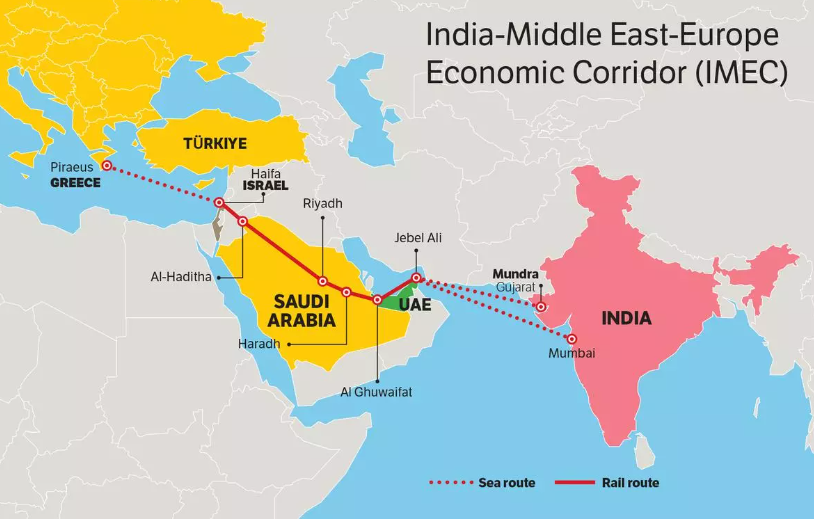13 November 2024 : The Hindu Editorial Analysis
1. Debating the ‘healthy longevity initiative’
(Source – The Hindu, International Edition – Page No. – 8)
| Context |
|
Introduction to the Report
- The World Bank published a report in September 2024 titled Unlocking the Power of Healthy Longevity: Demographic Change, Non-communicable Diseases, and Human Capital.
- The report addresses the rising ageing population and the shift towards non-communicable diseases (NCDs) as the leading cause of death in Low-and Middle-Income Countries (LMICs).
- Projections indicate an increase in global deaths from 61 million in 2023 to 92 million by 2050, mainly due to NCDs, especially in LMICs.
Proposed Healthy Longevity Initiative (HLI)
- The HLI aims to reduce avoidable deaths and disability across life stages, promoting physical, mental, and social health into old age.
- The report envisions a healthcare system with accessible services, competent and committed staff, well-equipped hospitals, and effective early detection for NCDs.
Challenges in LMICs, Including India
- The vision presented in the HLI is challenging to achieve due to real-world issues like corrupt practices, lack of infrastructure, and high healthcare costs.
- The report suggests modest and feasible strategies for addressing the NCD burden in LMICs.
India’s Aging Population and NCD Concerns
- Demographics and Health Risks
- India has the world’s second-largest elderly population (140 million aged 60+), growing at nearly triple the rate of the overall population.
- With increasing age, the elderly face a rapid rise in NCDs such as cardiovascular diseases, diabetes, and cancer, which can lead to economic strain and higher mortality.
- NCD Statistics and Factors in India
- By 2030, NCDs are expected to account for three-quarters of all deaths in India, with cardiovascular diseases, cancer, respiratory illness, and diabetes already comprising nearly 50% of all deaths.
- Common risk factors include tobacco use, alcohol abuse, sedentary lifestyles, and high-calorie diets with excessive carbohydrates and saturated fats.
Impact of Social Security Schemes
- Role of Social Security in NCD Prevention
- Social security schemes, such as pensions, support the elderly by offsetting health expenses, though they remain inadequate.
- Health insurance like Ayushman Bharat aims to cover the bottom 40% of households, but challenges like low funding, corruption, and complex eligibility limit its effectiveness.
- Dietary and Lifestyle Risks
- Diets high in refined grains, red meat, and fat-dense foods contribute to increased risks of diabetes and heart diseases.
- Aging and lifestyle factors, including sedentary habits and high-calorie diets, significantly heighten the risks of diabetes and heart disease in older adults.
Rising Hospital Expenses and Regulatory Efforts
- Issues with Private Hospital Costs
- Private hospitals in India often charge inflated prices, leading the Supreme Court to urge government regulation of hospital rates.
- Price caps on medical procedures could alleviate some financial strain if effectively enforced.
- Behavioural and Policy Changes Needed
- Reducing NCD risks also requires lifestyle changes, such as increased physical activity and better diets.
- Taxing unhealthy products, like tobacco, could help decrease the prevalence of conditions like diabetes and cardiovascular diseases.
Conclusion
- The World Bank report emphasises the need for comprehensive policy reforms to improve access to quality healthcare and reduce the NCD burden.
- However, the timeline for implementing these changes remains uncertain.
| PYQ: Q.1 “Demographic Dividend in India will remain only theoretical unless our manpower becomes more educated, aware, skilled and creative.” What measures have been taken by the government to enhance the capacity of our population to be more productive and employable? (200 words/12.5m) (UPSC CSE (M) GS-2 2016) Q.2 While we found India’s demographic dividend, we ignore the dropping rates of employability. What are we missing while doing so? Where will the jobs that India desperately needs come from? Explain. (200 words/12.5m) (UPSC CSE (M) GS-3 2014) |
| Practice Question: Discuss the impact of demographic ageing and rising non-communicable diseases on India’s economic and healthcare systems. What policy interventions can help mitigate these challenges, particularly for the elderly in low-income groups? (250 Words /15 marks) |
2. A mixed report card for the IMEC
(Source – The Hindu, International Edition – Page No. – 4)
| Context |
|
Introduction to IMEC

- In September 2023, the India-Middle East-Europe Corridor (IMEC) was announced during the G20 summit in New Delhi.
- The corridor aims to reduce transit time between eastern and western nodes by 40% and costs by 30% compared to the Suez Canal route.
- Once operational, IMEC is expected to significantly transform international maritime trade, though actual benefits may vary.
Current Progress and Challenges
- Progress on IMEC has been slow due to regional conflicts, particularly the escalation of the Israel-Palestine conflict in October 2023.
- Key stakeholders like Saudi Arabia and Jordan have yet to advance the project due to the sensitive geopolitical situation in West Asia.
- The northern part of the corridor, involving countries in West Asia, may continue to face delays until the conflict subsides.
Advances on the Eastern Leg
- The eastern part of the corridor, connecting UAE and Indian ports, has seen faster progress, driven by strong economic ties.
- Following the Comprehensive Economic Partnership Agreement (CEPA) in 2022, India-UAE trade increased from $43.30 billion in 2020-21 to $83.64 billion in 2023-24.
- Non-oil trade between India and UAE has also grown, reflecting a diversified trade basket that benefits India’s export potential in the region.
Streamlining Trade Processes
- India and UAE recently launched the Virtual Trade Corridor, aiming to streamline trade processes, cut logistics costs, and reduce administrative burdens.
- This framework could serve as a model for other countries along the IMEC to facilitate cross-border trade and encourage future connectivity.
Broader IMEC Objectives Awaiting Stability
- Other components of IMEC, such as clean energy exports, undersea fibre-optic cables, and energy grid linkages, remain on hold until stability returns to West Asia.
- Eastern corridor countries are advised to use this period to improve their connectivity infrastructure in preparation for the corridor’s full operationalization.
India’s Preparatory Role
- India should use this time to upgrade its ports, establish economic zones near connectivity nodes, and enhance domestic logistics to align with IMEC.
- Digitalization of the logistics sector would reduce costs and enhance export competitiveness, positioning India as an alternative in global supply chains.
- Strengthening manufacturing competitiveness is essential for India to fully leverage IMEC’s benefits.
Establishing an IMEC Secretariat
- India could advocate for an IMEC secretariat to organise and streamline the project.
- The secretariat could also provide research on cross-border trade benefits, helping neighbouring countries understand and potentially join the initiative.
| Practice Question: Discuss the strategic and economic significance of the India-Middle East-Europe Corridor (IMEC) for India. How can India overcome regional challenges to ensure its successful implementation? (150 Words /10 marks) |





